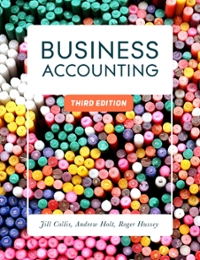Question
Aholt Company makes 40,000 units per year of a part that it uses in the products it manufactures. The unit product cost of this part
Aholt Company makes 40,000 units per year of a part that it uses in the products it manufactures. The unit product cost of this part is computed as follows:
Direct Materials $11.30
Direct Labour $22.70
Variable Manufacturing Overhead $1.20
Fixed Manufactiong Overhead $24.70
Unit Product Cost $59.90
An outside supplier has offered to sell the company all the parts that Aholt needs for $46.20 a unit. If the company accepts this offer, the facilities now being used to make the part could be used to make more units of a product that is in high demand. The additional contribution margin on this other product would be $264,000 per year.
If the part were purchased from the outside supplier, all direct labour cost of the part would be avoided. However, $21.90 of the fixed manufacturing overhead cost being applied to the part would continue, even if the part were purchased from the outside supplier. This fixed manufacturing overhead cost would be applied to the company's remaining products.
What is the net total dollar advantage (disadvantage) of purchasing the part rather than making it?
Here's my analysis:
Cost per unit make Make Cost per unit buy Buy
Outside purchase price 46.20 1848000
DM 11.3 452000 0 0
DL 22.7 908000 0 0
VMO 1.2 48000 0 0
FMO 24.7 988000 21.90 876000
Total 59.9 2396000 21.90 2724000
Change: 2396000 - 2724000 = -328000
Step by Step Solution
There are 3 Steps involved in it
Step: 1

Get Instant Access to Expert-Tailored Solutions
See step-by-step solutions with expert insights and AI powered tools for academic success
Step: 2

Step: 3

Ace Your Homework with AI
Get the answers you need in no time with our AI-driven, step-by-step assistance
Get Started


